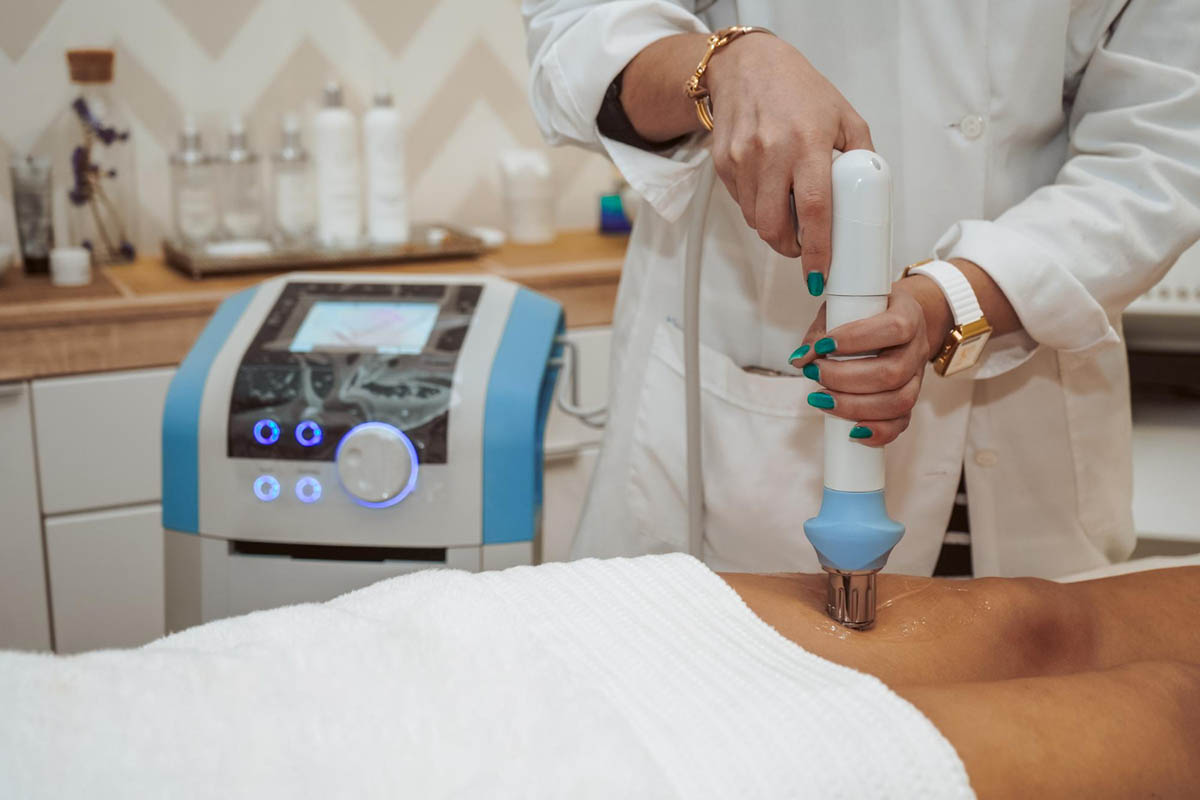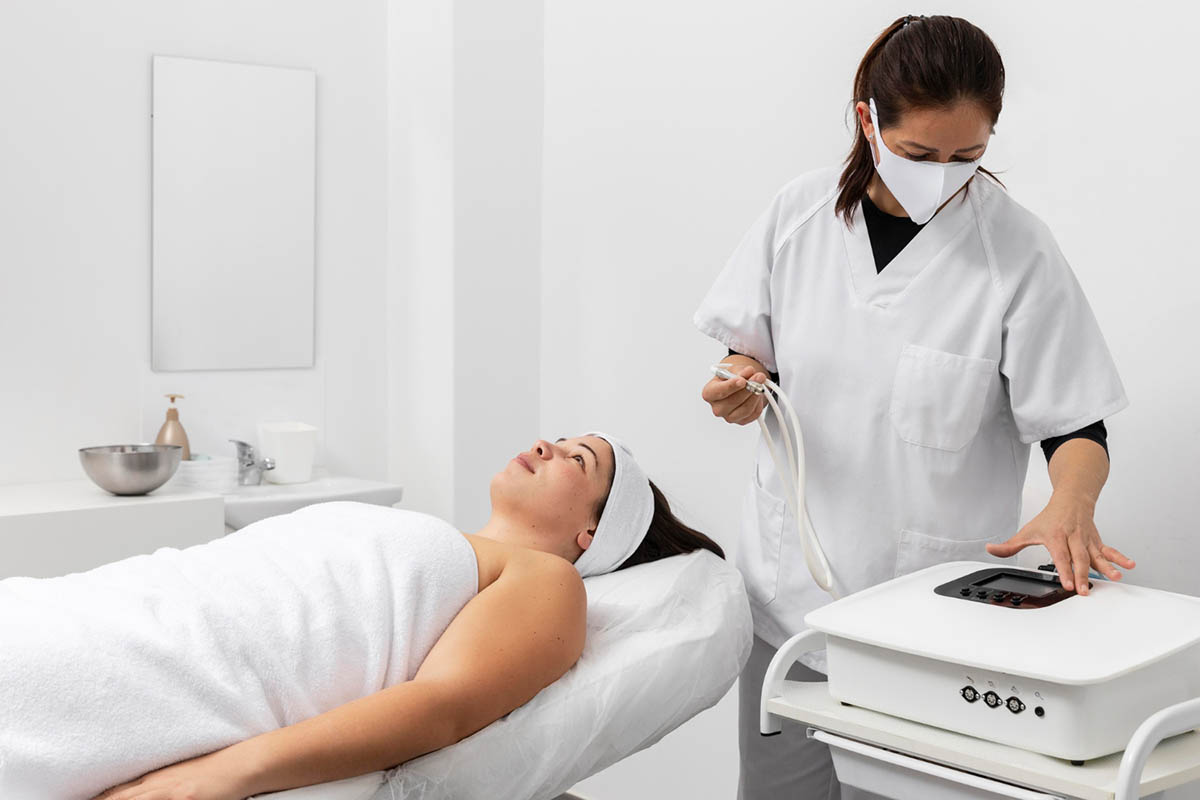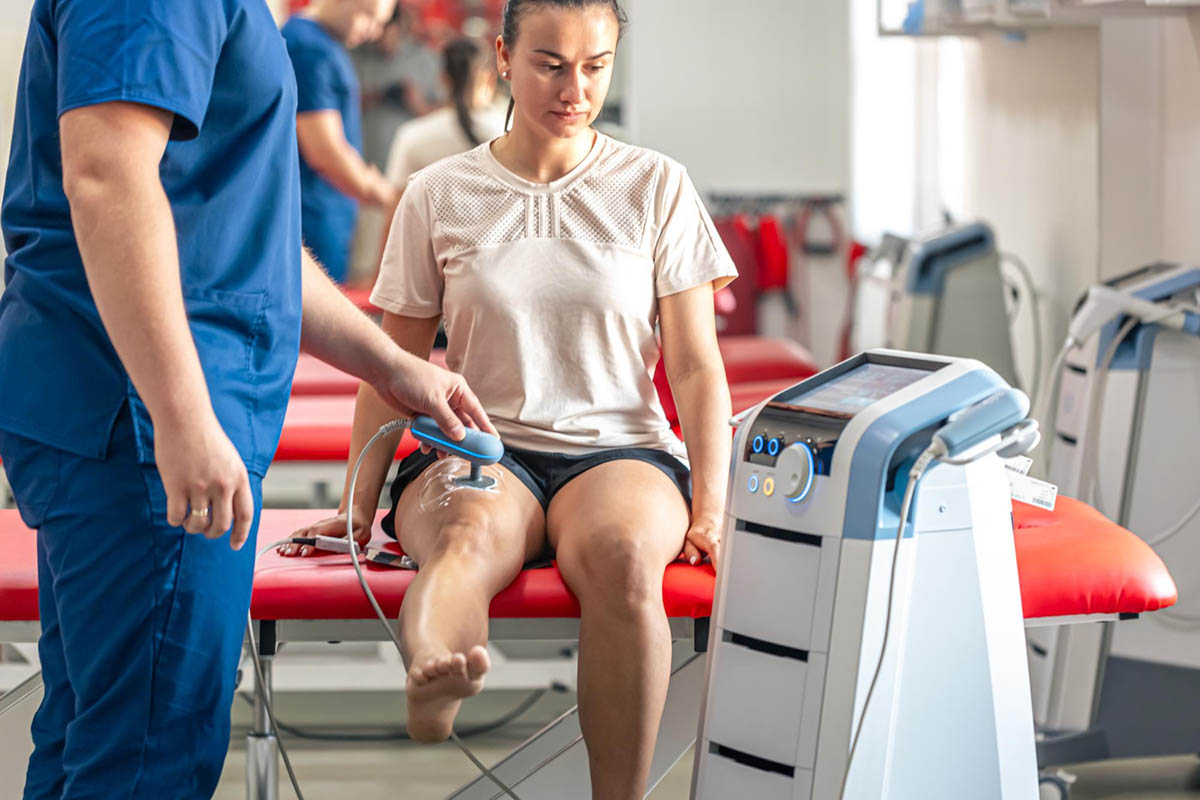Shockwave therapy has emerged as a revolutionary treatment in the world of physical therapy, offering relief for a wide range of musculoskeletal conditions. As an innovative approach, shockwave therapy machines at Progressive Mobility Physio & Performance transform how we address pain, mobility issues, and recovery processes. This blog post will explore how these machines work, their benefits for multiple conditions, and the differences between focused and radial device shockwave therapy.
How a Shockwave Therapy Machine Works
Shockwave therapy, or extracorporeal shock wave therapy (ESWT), utilizes high-energy acoustic waves to stimulate the body’s natural healing process. These acoustic pressure waves are delivered through a shock wave therapy machine via a handheld applicator that targets specific body areas. The primary mechanism behind this therapy involves the application of high-energy shockwaves to the affected tissues, promoting increased blood supply, tissue repair, and collagen production.
Shockwave therapy machines utilize two primary types of shockwaves: focused shock waves and radial pressure waves. Focused shockwaves deliver highly concentrated energy that penetrates deep into tissues, making them particularly effective for addressing deeper conditions like chronic tendinopathy and joint pain. In contrast, radial shock wave therapy disperses from the point of contact, covering a wider area, and is typically employed for treating more superficial conditions, such as muscle and tendon issues located closer to the skin’s surface. This approach is beneficial for addressing soft tissue injuries and musculoskeletal pains.
How Shockwave Therapy Machines Help for Multiple Conditions
To grasp the benefits fully, it’s helpful to know, what is shock wave therapy? It offers versatile solutions for a range of conditions, from pain relief to enhanced mobility. Below are the ways it provides benefits across multiple areas, including Integrated Sports Medicine and regenerative medicine:
Pain Relief and Healing
Shockwave therapy offers versatile solutions for a range of conditions. Below are the ways it provides benefits across multiple areas, including sports medicine and regenerative medicine: Overuse injury, chronic conditions, and other ailments like Frozen shoulder and Shin splints are commonly treated using this medical procedure. Additionally, treatment sessions can target specific connective tissues to aid healing.
- Tendonitis, Plantar Fasciitis, Tennis Elbow, and More: Shockwave therapy is particularly effective for reducing pain and promoting healing in several common conditions: Patellar tendinopathy, foot pain, tennis elbow, and more. Double-blind, randomized, controlled studies indicate up to 91% improvement with an 84% success rate for numerous conditions. Tendonitis, which involves inflammation of the tendons, can lead to considerable pain and stiffness. Shockwave therapy aids in reducing this inflammation and enhancing tendon repair. Additionally, for those suffering from chronic plantar fasciitis, a common cause of heel pain, shockwave therapy stimulates healing in the plantar fascia, providing significant relief without resorting to corticosteroid injections or other invasive procedures. Similarly, tennis elbow, or lateral epicondylitis, benefits from this therapy by reducing pain and improving the healing of the affected tendons. Thus, shockwave therapy offers a promising solution for relief and recovery, whether it’s tendonitis, plantar fasciitis, or tennis elbow.
- Chronic pain management: Shockwave therapy provides a non-invasive approach to alleviate pain and enhance functionality. Over time, patients may experience significant improvements in their overall condition, reducing reliance on more invasive options like steroid injections or surgical interventions.
Enhanced Mobility

Improved range of motion and reduced muscle stiffness are crucial for maintaining everyday activities and an active lifestyle. Shockwave therapy aids in:
- Improving Range of Motion: By addressing the underlying causes of restricted movement, such as tight muscles or stiff joints, shockwave therapy helps enhance flexibility and mobility.
- Reducing Muscle Stiffness: The treatment promotes the relaxation of tense muscles, improving overall mobility and ease of movement. Additionally, shockwave therapy supports deep tissue treatment and can be effective for knee pain, shoulder pain, and other musculoskeletal issues.
Accelerated Recovery
In sports medicine and post-surgical rehabilitation, shockwave therapy accelerates healing by promoting blood flow and stimulating cell regeneration. This improved circulation and cellular activity significantly enhance recovery times, allowing patients to return to normal activities sooner. Shockwave therapy can also benefit patients with pacemakers, musculoskeletal injuries, and sports-related injuries. Shockwave treatments can aid bone healing and are an effective non-invasive treatment option for soft tissue conditions.
- Sports Injuries: Shockwave therapy can accelerate the healing of sports-related injuries, helping athletes return to their activities more quickly.
- Post-Surgical Rehabilitation: Shockwave therapy supports the healing process and reduces recovery time for patients recovering from surgery.
Other Applications
The global Shockwave Therapy Market was valued at $1,171.19 million in 2021, with projections indicating it will reach $2,269.62 million by 2031. This innovative therapy extends beyond traditional physical therapy applications, providing therapeutic benefits for various medical conditions. Its adaptability confirms the effectiveness of shockwave therapy in treating issues such as erectile dysfunction, diabetic foot ulcers, and even cellulite. The biological effects of shockwaves are also being explored in treating neurological disorders and brain injuries, showcasing the broad potential of this technology. Shockwave therapy is also showing promise in regenerative medicine and neurorehabilitation, potentially offering solutions for conditions like cerebral palsy and spinal cord injuries.
- Erectile Dysfunction: Shockwave therapy enhances blood circulation and assists in restoring erectile function. This non-invasive treatment option offers a promising solution for those experiencing erectile dysfunction.
- Wound Healing: The treatment can promote the healing chronic wounds and ulcers. Enhancing circulation and cellular activity supports tissue regeneration in affected areas.
- Cellulite Reduction: Shockwave therapy promotes increased blood circulation and collagen synthesis, reducing cellulite. This treatment effectively targets the affected areas, resulting in smoother skin texture.
Focused vs. Radial Shockwave Therapy
Focused shockwave therapy delivers concentrated energy to specific targets, making it ideal for treating deep tissue conditions such as stress fractures and calcific shoulders. In contrast, radial shockwave therapy disperses energy over a larger area, effectively addressing more superficial issues and promoting broader tissue healing. Radial waves are beneficial for treating conditions like musculoskeletal disorders and soft tissue injuries.
Key Differences
When selecting between focused and radial shock wave therapy, it’s essential to consider the condition being addressed and the depth of the issue at hand. Radial therapy covers more significant regions and is beneficial for more widespread injuries. Concentrated shockwave therapy is specifically designed for deep tissue ailments, delivering precise and targeted treatment, whereas radial shockwave therapy is more appropriate for superficial conditions and expansive areas, providing broader coverage for various therapeutic needs.
Choosing the Right Shockwave Therapy Procedure

Individual musculoskeletal conditions and treatment goals must be considered when deciding what shock wave therapy is and choosing the proper procedure. Additionally, consulting with a sports medicine specialist can help determine the most effective treatment approach for your needs. Radial shockwave devices and focused shockwave machines each offer unique benefits depending on the type of shockwave therapy required.
- Treatment Comfort and Efficiency: Focused shockwaves might be more intense but provide deeper penetration, while radial shockwaves cover a more extensive treatment area with less intensity, making them suitable for superficial conditions like muscle strain and overuse injury.
- Treatment Cost: The cost may vary based on the type of shockwave therapy and the condition being treated.
- Consultation with a Medical Professional: Always consult a healthcare provider to determine the most suitable treatment based on your needs.
Conclusion
Shockwave therapy machines are potent tools in physical therapy, offering significant benefits for a wide range of conditions. From pain relief and enhanced mobility to accelerated recovery and additional applications, these machines are transforming patient care. Whether you’re dealing with chronic pain conditions, sports injuries, or seeking non-invasive treatment options, shockwave therapy could be the ideal treatment you need.
FAQs
Is shockwave therapy safe, and what are the potential side effects?
Shockwave therapy is generally considered safe with minimal side effects. Common side effects may include mild discomfort, redness, or swelling at the treatment site. It is essential to discuss any concerns with your healthcare professional before starting therapy.
How many shockwave therapy sessions are typically needed to see results?
The number of sessions required can vary depending on the condition and individual response to treatment. Patients may start seeing improvements after 3-5 sessions, but 6-12 sessions are often recommended for optimal results.
Can a shockwave therapy machine be used in conjunction with other treatments or therapies?
Yes, shockwave therapy can often be combined with other treatments such as physical therapy, medication, or lifestyle changes. It’s crucial to consult with your healthcare provider to develop a comprehensive treatment plan tailored to your needs.



